

Part Three:
Form Factor of Christmas Lights
Christmas lights typically come in more configurations than just a line of lamps connected with a plug and a connector – there are strands that are shaped like a net, there are strands that look like icicles, and others that are are just wacky. For example, other than a linear array of christmas lights, you can buy cascade (drape) lights, net (mesh) lights, icicle strands, curtain strands, and even strands of lights that come with a frame that looks like something significant. You know, significant – like a deer or fat Santa or Frosty or something.
You can use any of these form factors for anything your heart desires, really – there’s no hard fast rules on christmas lighting design, except for not getting yourself electrocuted and/or falling off the roof and getting dead.
First and foremost, the strand, string, or whatever you want to call a linear run of christmas lamps. It is, in effect, a string of point sources. I won’t even bother posting a picture of them, as I would hope everyone knows what they look like. Okay, maybe I’ll post a picture. Here’s a string of LED G12 globes I just got from Philips:
They’re a string of lights. Wrap em, sling em, stick them around a window, a tree, a bush, your friends – they’re christmas lights! Sometimes it’s fun just to stick some christmas lights in a glass vase and plug them in atop your desk or counter for decoration. Why not?
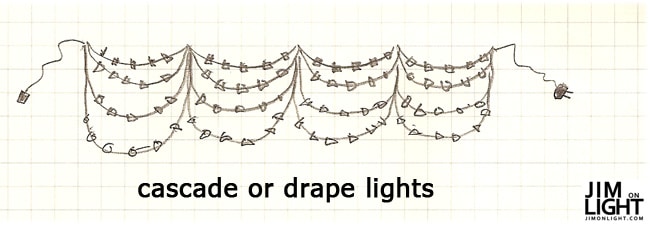
Cascade strings (also called drape lights) always remind me of Austrian curtains, sort of – they have different layers that hang lower than others. They come in solid colors, a multicolor version, and a white or clear. Cascade lights can go in places like large windows, across the gutter hanging down, or an interesting usage I have seen in recent past was hanging them under the fullness of a large, round tree – it made the tree look as if it had a scallopy round skirt.

Mesh lights (also called net lights) are just that – christmas lights wired in such a way that they resemble a net of sorts. I’ve seen them in all colors, multicolor, white, and a “smart net” kind of set, with a controller and the ability to individually function. Mesh lights are excellent for throwing over a round bush in your yard, small trees, and anywhere that you need to cover square footage with dimension.
Icicle lights, like in my crude little sketch above, are little “randomly” hung independent strings of lamps off of a support wire bundle. The randomness is usually in the form of a repeating pattern of five or six hanging strands, and you can usually install them in groups that look similarly random. Icicle lights can look interesting hanging off of the gutter in the front of the house, or in a-frame roofs, as the icicles will hang straight down. Don’t go overboard though!

Curtain lights (also called rain lights) are similar to icicle lights in the fact that they have independent strings. Curtain lights are all one length, come in single colors, multiple colors, and white. Same ideas apply with curtain lights as do icicle lights. I always wanted to wrap a large architectural column completely in curtain lights from the bottom, repeating the primary colors in layers up the column. I think that would look pretty cool, especially if you had independent control of each color!
Another form worthy of mention is rope lighting:
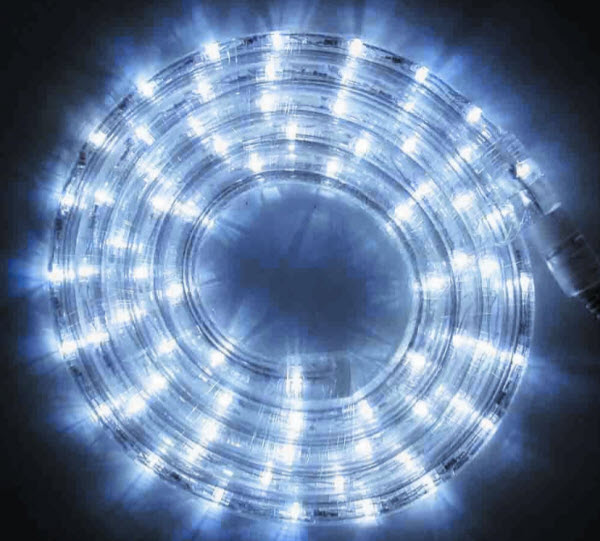
Rope lighting is, in my opinion, a really weird animal. In itself, it is a string of light sources – but due to its construction and materials (like the light-transmitting plastic), it becomes a glowing structure with multiple point sources. So, in comparison to a string of mini-lights on your house, the mini-light string will look like a string of points of light whereas a string of rope light has a tendency to look like a 1″ thick line of light with multiple sources in it. It’s not bad if done correctly, but mixed in with other point sources, it has a tendency to look pretty gnarly.
Here’s a close-up of a rope light – obviously they have different outside dimensions and widths. Notice the way that the plastic covering was faceted in the molding process:
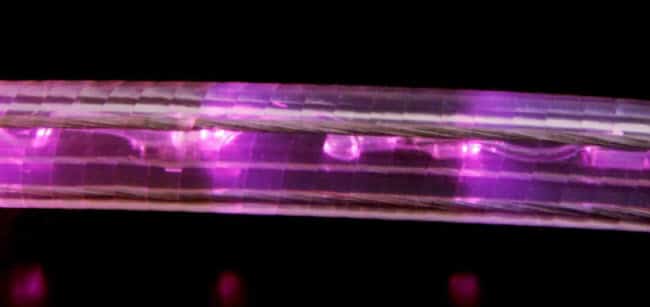
Go with rope lighting on its own if you decide to use it – my opinion is that mixing it with point source strands kind of looks funky. Obviously there are exceptions to the rule, and if you figure out how to use them together, awesome! It does have properties of light that are very unique, and in their own regard, stunning. Rope light looks especially awesome when it gets covered with snow – like a glowing sheet of snow.
Also, it comes in really long lengths:
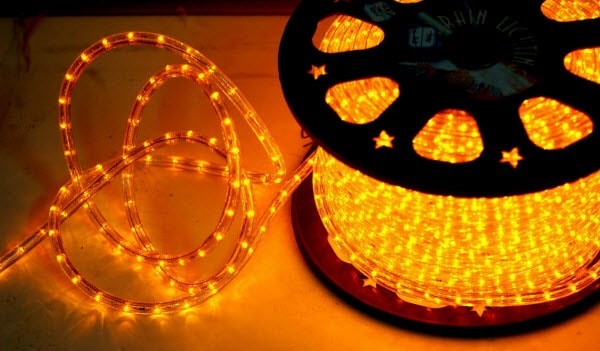
Amazon, funny enough, usually has ridiculous deals on christmas lighting, and usually something in each form (mesh, curtain, icicle, linear, cascades, rope lights), and you can usually get large quantities very quickly. Also, you can certainly canvas the dollar stores, thrift shops, and places like Target for deals, but you’re not gonna find anything like that until after the holiday is over, usually.
Here’s a link to just a general LED christmas lights search on Amazon, and a link to a search for christmas lights sets
. There are several excellent manufacturers of christmas lighting in all form factors – Sylvania
, General Electric
, NOMA Christmas Lighting
, the big guys – but there is a smaller scale supplier that I think rocks – Bethlehem Lighting
, near where I grew up in Illinois. There was always a large festival called the East Peoria Festival of Lights around the end of November each year, and this company supplied the lighting. They also do commercial sized supply, which is something I’ve been meaning to write more about.
Commercial-scale christmas lighting supply? I bet those christmas parties are out of this world!
Next up: Part Four – Christmas Light Control Systems – stay tuned!

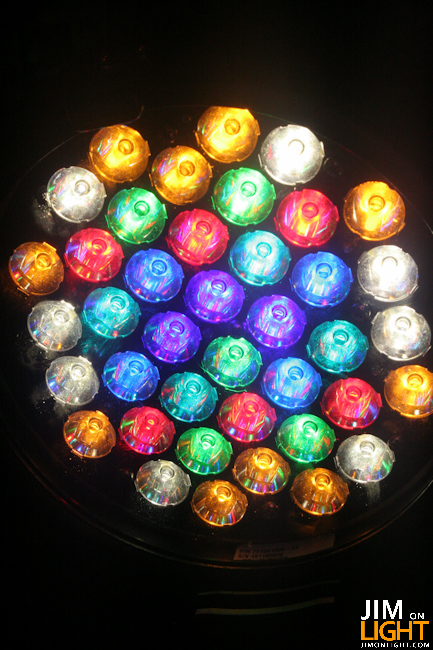



Comments are closed.